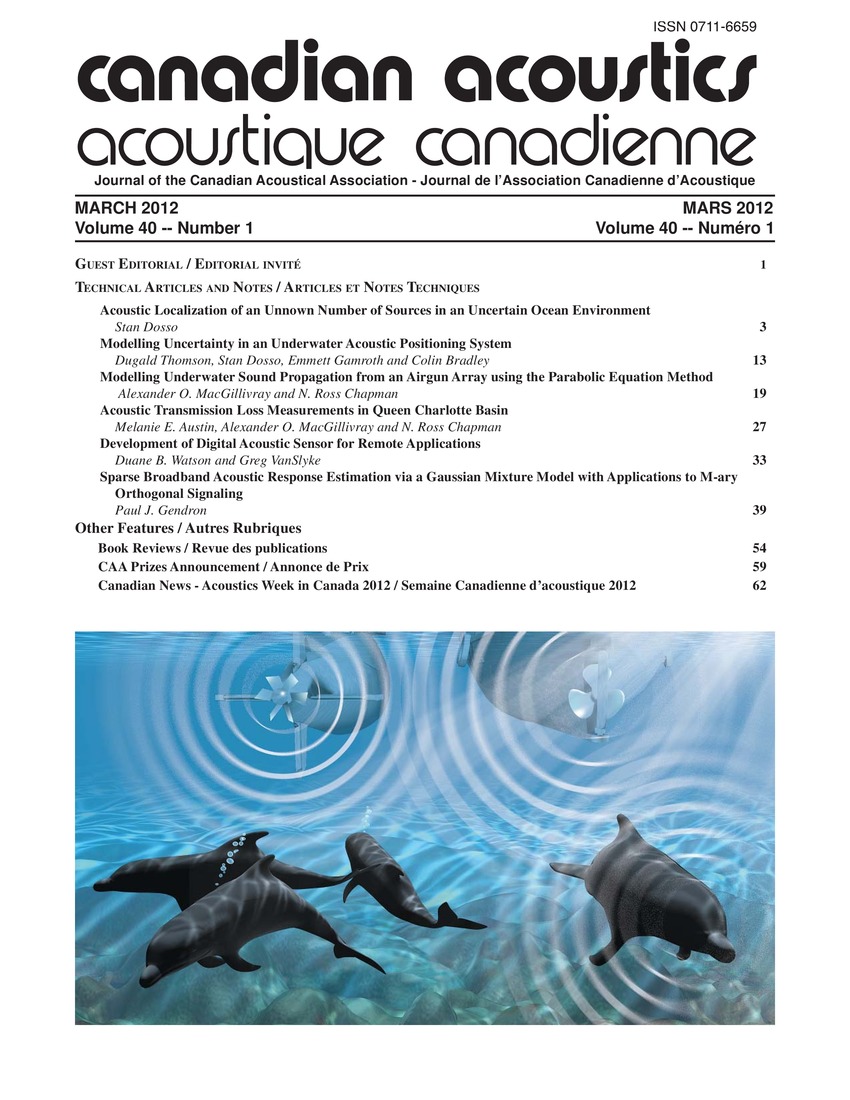Modelling uncertainty in an underwater acoustic positioning system
Keywords:
Autonomous underwater vehicles, Equipment testing, Hydrophones, Underwater acoustics, Acoustic localization, Acoustic transmission, Arrival time, Environmental factors, Hydrophone geometry, Localization accuracy, Source location, Test range, Timing errors, Underwater acoustic positioningAbstract
This paper develops a ray-based travel-time inversion to simulate the accuracy of an active underwater acoustic localization system, and examines the localization accuracy as a function of various sources of error and geometric and environmental factors. The system considered here simulates localizing an autonomous underwater vehicle using arrival times of acoustic transmissions from an onboard source as measured at hydrophones distributed spatially over a test range. Since localization uncertainty is a function of source location, uncertainties are calculated for the source at a grid of locations over the areas of the test bed. Localization accuracy is considered as a function of timing errors, uncertainty in hydrophone locations, target depth, variations in sound-speed profile, and hydrophone geometry.Additional Files
Published
How to Cite
Issue
Section
License
Author Licensing Addendum
This Licensing Addendum ("Addendum") is entered into between the undersigned Author(s) and Canadian Acoustics journal published by the Canadian Acoustical Association (hereinafter referred to as the "Publisher"). The Author(s) and the Publisher agree as follows:
-
Retained Rights: The Author(s) retain(s) the following rights:
- The right to reproduce, distribute, and publicly display the Work on the Author's personal website or the website of the Author's institution.
- The right to use the Work in the Author's teaching activities and presentations.
- The right to include the Work in a compilation for the Author's personal use, not for sale.
-
Grant of License: The Author(s) grant(s) to the Publisher a worldwide exclusive license to publish, reproduce, distribute, and display the Work in Canadian Acoustics and any other formats and media deemed appropriate by the Publisher.
-
Attribution: The Publisher agrees to include proper attribution to the Author(s) in all publications and reproductions of the Work.
-
No Conflict: This Addendum is intended to be in harmony with, and not in conflict with, the terms and conditions of the original agreement entered into between the Author(s) and the Publisher.
-
Copyright Clause: Copyright on articles is held by the Author(s). The corresponding Author has the right to grant on behalf of all Authors and does grant on behalf of all Authors, a worldwide exclusive license to the Publisher and its licensees in perpetuity, in all forms, formats, and media (whether known now or created in the future), including but not limited to the rights to publish, reproduce, distribute, display, store, translate, create adaptations, reprints, include within collections, and create summaries, extracts, and/or abstracts of the Contribution.


